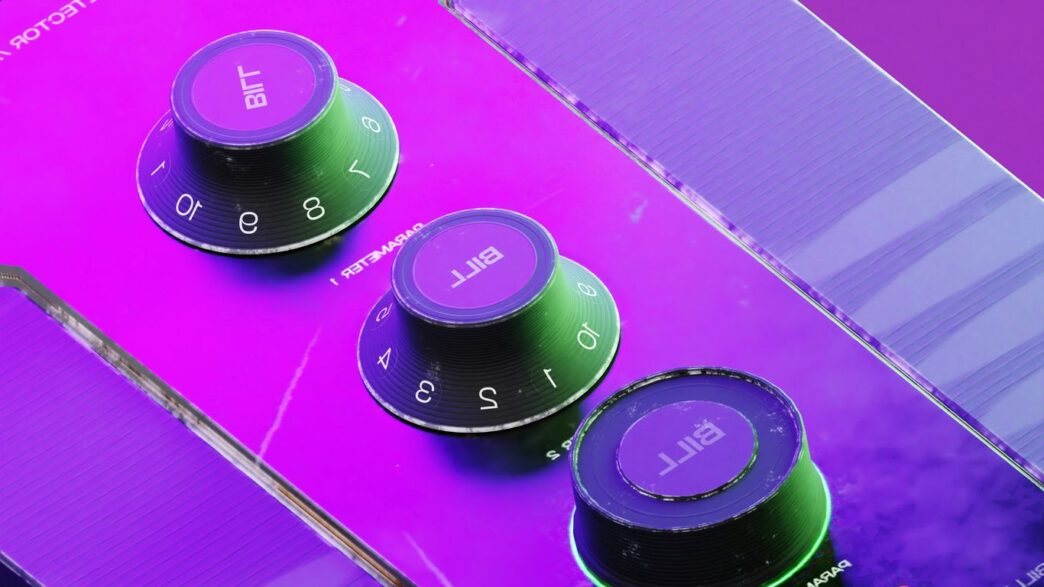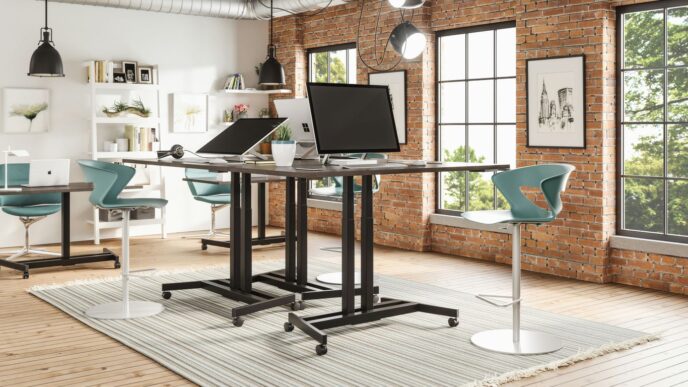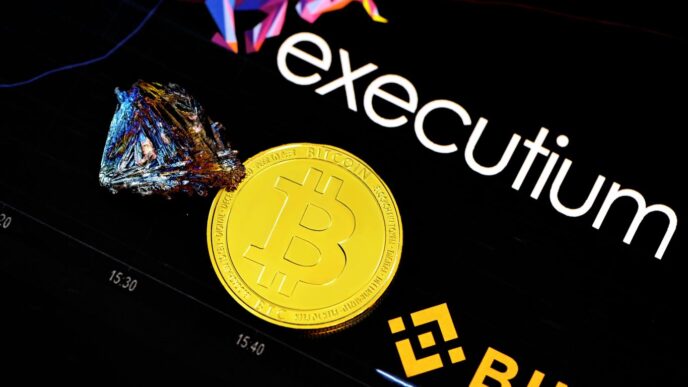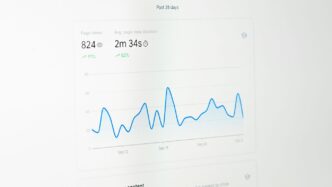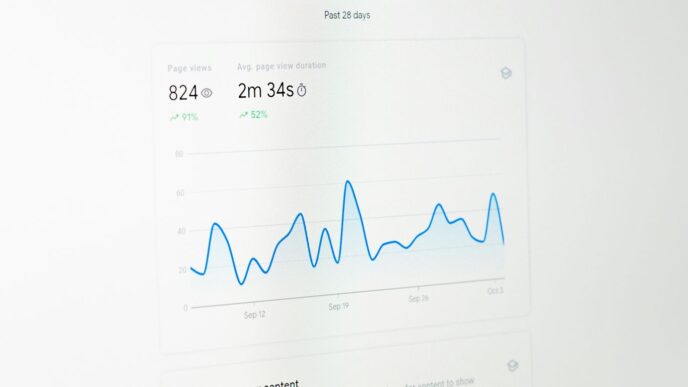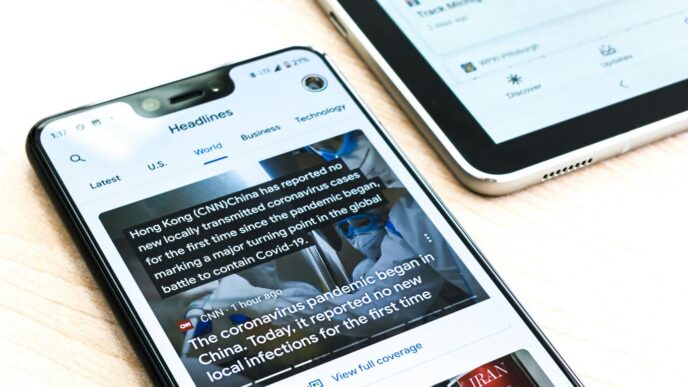Get ready for what’s next! Fast Company’s Next Big Things in Tech is back, shining a light on the innovations that are going to change our lives in 2025. From super-smart AI to health tech that actually works, and even how we’ll eat and get around, this year’s list is packed with stuff that’s going to make a difference. We’re talking about tech that’s not just cool, but actually useful, making things easier, healthier, and more sustainable for all of us. Let’s see what’s on the horizon.
Key Takeaways
- AI is getting even smarter, helping with everything from making videos to designing products and making our phones better.
- Health tech is seeing big jumps, with new ways to treat eye problems and tools that help doctors do their jobs.
- We’re seeing new ideas in farming and food, like growing seaweed easily and finding ways to grow food in tough weather.
- Computers are getting a serious upgrade with faster chips and big steps in quantum computing, plus better internet for everyone.
- Getting around is changing too, with new electric boats, self-driving trucks, and smarter ways to move cargo.
AI and Data Innovations Shaping Tomorrow
Artificial intelligence and data are really starting to change how we do things, and it’s not just about fancy new gadgets anymore. We’re seeing AI pop up in places that make our daily lives and work much smoother. Think about how video production is getting a serious upgrade. AI tools can now help with editing, suggesting cuts, and even generating rough drafts, which saves a ton of time for creators. It means more people can get their ideas out there without needing a huge crew or a massive budget.
Then there’s the whole sustainability angle. Companies are using data, often gathered by AI, to design products that are better for the planet. This means looking at the entire lifecycle of an item, from where the materials come from to how it’s made and what happens when it’s no longer needed. By analyzing all this information, designers can make smarter choices, reducing waste and energy use. It’s a big shift from just making things look good to making them do good, too.
And our phones? They’re getting smarter too, thanks to AI. We’re talking about cameras that can do more than just take pictures, like understanding what’s in a scene to improve the shot automatically. Or apps that can predict what you might need next, making your phone feel more like a helpful assistant. These advancements are making our devices more intuitive and useful in ways we’re only just beginning to explore.
Here’s a quick look at what’s happening:
- Video Production: AI is speeding up editing, suggesting content, and even helping with scriptwriting.
- Sustainable Design: Data analysis helps create products with less environmental impact.
- Smarter Smartphones: AI improves camera performance, app suggestions, and overall user experience.
Revolutionizing Health and Wellness Tech
This year, we’re seeing some really interesting developments in how we take care of ourselves, from our eyes to our overall well-being. It’s not just about new gadgets, but smarter ways to tackle health issues that have been around for a while.
Novel Glaucoma Treatments on the Horizon
Glaucoma, a condition that can lead to blindness if not managed, is getting some serious attention. Researchers are looking into new ways to slow its progression and even protect the optic nerve. Think less about invasive procedures and more about targeted therapies that work with the body’s natural processes. The goal is to catch it earlier and manage it more effectively, potentially saving sight for millions.
Light Therapy Devices for Enhanced Health
Remember when light therapy was mostly for seasonal affective disorder? Well, it’s expanding. New devices are being developed that use specific wavelengths of light to help with things like skin conditions, sleep patterns, and even muscle recovery. These aren’t just fancy lamps; they’re becoming more precise and personalized, aiming to offer non-drug solutions for a range of wellness goals.
AI-Powered Tools for Medical Professionals
Artificial intelligence is starting to make a real difference behind the scenes in healthcare. AI tools are being built to help doctors and nurses with tasks that take up a lot of their time. This could mean:
- Faster analysis of medical images, like X-rays or MRIs.
- Smarter ways to sort through patient data to find important trends.
- Tools that help with administrative work, freeing up medical staff to focus more on patients.
The idea is to make the healthcare system run a bit smoother and give medical pros more time for what matters most – patient care.
Transforming Food Systems and Agriculture

Our food systems are facing some pretty big challenges, from climate change messing with growing seasons to making sure everyone has enough to eat. But thankfully, there are some really smart people working on solutions. This year, we’re seeing some exciting developments that could really change how we grow and get our food.
Affordable Seaweed Cultivation Solutions
Seaweed might not be the first thing you think of when you picture food, but it’s actually a super versatile and sustainable crop. It grows fast, doesn’t need fresh water or fertilizer, and can even help clean up ocean pollution. The big hurdle has always been making it affordable to grow and harvest on a large scale. New methods are emerging that cut down on costs, making seaweed farming a more realistic option for coastal communities and a potential new source of food and materials. This could mean more sustainable seafood alternatives and even ingredients for things like bioplastics.
Open-Source Tools for Extreme Heat Mapping
As the planet warms up, certain areas are getting hit with extreme heat waves more often. This is tough on crops, livestock, and the people who farm them. Being able to accurately map where these heat risks are highest is super important for planning and adaptation. Open-source tools are making this kind of detailed mapping more accessible. Farmers and researchers can use these tools to:
- Identify vulnerable crops and livestock.
- Plan irrigation and shade strategies.
- Develop early warning systems for extreme weather events.
This kind of data is key for building resilience in agriculture, especially in regions already struggling with heat. It’s all about using technology to get ahead of the curve and protect our food supply. You can find more information on transforming food systems through innovation at smart agriculture and digital technologies.
Innovations in Sustainable Food Production
Beyond seaweed and heat mapping, there’s a whole wave of innovations focused on making food production kinder to the planet. This includes everything from developing drought-resistant crops using advanced breeding techniques to creating vertical farms that use less land and water in urban areas. We’re also seeing a push for more circular economy approaches, where waste from one process becomes a resource for another. Think about using food waste to create energy or animal feed. These aren’t just small tweaks; they’re big shifts aimed at creating a food system that can actually support us long-term without depleting resources.
Advancements in Computing and Foundational Technology
This section looks at the building blocks that make all the other tech possible. It’s not always the flashiest stuff, but it’s what lets us do amazing things.
Next-Generation Chips for Accelerated AI
We’re seeing chips designed specifically to handle the heavy lifting AI requires. These aren’t your average processors; they’re built from the ground up for tasks like machine learning and complex data analysis. Think of it like having a specialized tool for a very specific, very demanding job. This means AI can get smarter, faster, and more efficient. Companies are pouring resources into this because AI is becoming a part of almost everything we do, from how we search online to how we diagnose diseases. The demand for AI-specific silicon is driving innovation at an incredible pace.
High-Speed Internet Access Deployment
Getting fast internet to everyone, everywhere is still a big push. It’s not just about faster downloads; it’s about connecting more people to opportunities, education, and essential services. We’re seeing new ways to deploy fiber optics and advancements in wireless technologies that can reach more remote areas. This is about closing the digital divide and making sure no one gets left behind in our increasingly connected world. It’s a massive infrastructure challenge, but the payoff is huge for global connectivity. Check out some of the work being done in high-speed internet access.
Quantum Computing Breakthroughs
Quantum computing is still a bit like science fiction for many, but real progress is happening. These machines use quantum mechanics to perform calculations that are impossible for even the most powerful supercomputers today. While we’re not all going to have quantum computers on our desks anytime soon, the breakthroughs are significant. They hold the potential to revolutionize fields like drug discovery, materials science, and complex financial modeling. It’s a long road, but the foundational work being done now is setting the stage for future revolutions. The progress in areas like quantum computing is truly remarkable.
The Future of Transportation and Mobility
Get ready for a shake-up in how we get around. 2025 is shaping up to be a big year for changes in transportation, with a focus on making things cleaner, smarter, and more efficient. We’re not just talking about faster cars, though that’s part of it. Think about boats that run on electricity, trucks that can drive themselves, and even new ways to move goods around the world.
Electric Boat Technology
Forget noisy, gas-guzzling engines on the water. Electric boats are finally starting to make serious waves. These aren’t just for fancy yachts anymore; we’re seeing electric options for ferries, workboats, and even personal watercraft. The big win here is a much quieter ride and zero emissions, which is a huge deal for our lakes, rivers, and coastal areas. Battery tech is getting better, meaning longer ranges and quicker charging times. It’s still early days for widespread adoption, but the trend is clear: the future of boating is electric.
Autonomous Trucking Innovations
Self-driving trucks have been talked about for ages, and it feels like 2025 might be the year they start becoming a more common sight on our highways. Companies are making real progress in getting these big rigs to handle long-haul routes safely. The idea is to reduce accidents caused by driver fatigue and improve fuel efficiency through optimized driving. Of course, there are still hurdles to clear, like figuring out regulations and what happens to truck drivers. But the potential for a more reliable and cost-effective way to move freight is massive.
Redefining Cargo Transport
Beyond just trucks, the whole system of moving goods is getting a rethink. We’re seeing innovations that aim to make cargo transport quicker and more direct. This includes things like better logistics software that uses AI to figure out the best routes and methods, and even new ideas for how goods get from ports to warehouses. The goal is to cut down on delays and reduce the environmental impact of shipping. Think about systems that can better manage the flow of goods, making sure your packages arrive when they’re supposed to, without unnecessary stops or emissions.
Innovations in Sustainability and Energy
This year, we’re seeing some really smart ideas pop up in the sustainability and energy space. It’s not just about big, flashy projects; a lot of the progress is happening with everyday items and smarter systems. Think about how we use energy at home or how we can make things more efficient. These practical innovations are key to making a real difference.
Energy-Efficient Induction Stoves
Induction stoves have been around, but they’re getting a serious upgrade. The new models are way more efficient than old electric or gas stoves. They heat up faster, use less power, and are much safer because the cooktop itself doesn’t get super hot. This means less wasted energy and a cooler kitchen. Plus, they offer precise temperature control, which is great for cooking. It’s a simple switch that can cut down on your home’s energy use.
Smart Radiator Covers for Energy Savings
Radiators can be tricky. You want your home warm, but you don’t want to waste heat. Smart radiator covers are a neat solution. These aren’t just simple covers; they often have sensors and controls built-in. They can detect when a room is empty or when the desired temperature is reached and adjust the radiator’s output accordingly. Some even connect to your home’s smart system. This means you’re not heating rooms that nobody is using, which can lead to significant savings on your heating bill. It’s a clever way to manage heat more effectively.
Technologies for a More Sustainable World
Beyond stoves and radiators, there’s a whole range of tech aiming for a greener planet. We’re seeing better battery storage solutions that make renewable energy more reliable. Advances in materials science are leading to products that last longer and are easier to recycle. There’s also a push for better ways to track and reduce emissions across industries. These efforts, big and small, are all working towards a future where we use resources more wisely. It’s about making sustainability a normal part of how we live and work.
Next Big Things in Consumer Technology
Get ready, folks, because 2025 is shaping up to be a pretty interesting year for the gadgets and gizmos we use every day. It feels like every year, things get a little faster, a little smarter, and maybe even a little weirder. This year is no exception, with some cool advancements hitting the consumer tech scene.
Faster 3D Printing Solutions
Remember when 3D printing felt like something out of a sci-fi movie? Well, it’s getting way more practical. We’re seeing printers that can churn out objects much quicker than before. This means you could potentially design something in the morning and hold it in your hands by the afternoon. Think custom phone cases, replacement parts for household items, or even unique art pieces, all made at home with less waiting around. The speed improvements are making 3D printing a real option for everyday problem-solving and creative projects, not just for hobbyists.
Brainwave-Monitoring Headphones
This one sounds a bit futuristic, but it’s actually happening. Headphones are starting to get smart enough to pick up on your brain activity. What does that mean for you? Well, imagine headphones that can tell when you’re getting stressed and automatically adjust your music to something more calming. Or maybe they could help you focus better by giving feedback on your concentration levels. It’s like having a personal assistant for your mind, right there in your ears. The technology is still developing, but the potential for mental wellness and productivity tools is pretty big.
Lighter Laptop Designs
Carrying around a heavy laptop can be a real pain, right? Good news is, manufacturers are working hard to shave off weight without sacrificing power. We’re talking about new materials and smarter internal designs that make laptops significantly lighter. This means easier commutes, less strain on your back, and just a generally more pleasant experience when you need to work or play on the go. The goal is to make powerful computing so portable, you’ll barely notice it’s in your bag.
Looking Ahead
So, that’s a look at some of the tech that’s got us excited for 2025. It’s pretty wild to see how fast things are moving, right? From making our jobs easier with smart AI tools to finding new ways to deal with big problems like climate change, there’s a lot going on. It’s not just about the flashy new gadgets, either. A lot of these ideas are about making things work better, be fairer, or just plain improve our daily lives. We’ll have to keep an eye on these innovations to see how they really shake out, but one thing’s for sure: the next year is shaping up to be a really interesting one for technology.
Frequently Asked Questions
What kind of AI is changing video production?
Super smart AI tools are making video creation easier and faster. Imagine AI helping edit videos or even create special effects, saving lots of time and effort for filmmakers.
How is technology helping make products better for the planet?
Companies are using data to design products that are kinder to the environment. This means thinking about how things are made, used, and thrown away, aiming for less waste and pollution.
Are there new ways to treat eye problems like glaucoma?
Yes, scientists are working on new and better ways to help people with glaucoma. These new treatments could be more effective and easier for patients to use.
What’s new in making food production more sustainable?
There are exciting ideas like growing seaweed more easily and affordably. Also, tools that help us understand how extreme heat affects where we can grow food are becoming more common.
How are computers getting faster for things like AI?
New types of computer chips are being made that are super powerful, especially for AI. Think of them as super-brains for computers that can handle complex tasks much quicker.
What’s happening with electric transportation?
We’re seeing advancements in electric boats, which are quieter and cleaner. Plus, self-driving trucks are getting closer to reality, which could change how goods are moved around.


